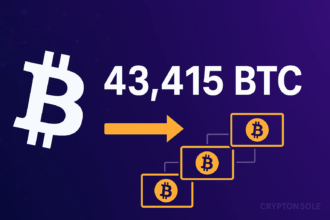The Bitcoin price goes on to lure investors and analysts from all over the world. The more the crypto adoption goes on, the Bitcoin 2050 price forecasts become increasingly divided6 to range from cautious million to jaw-dropping tens of millions. This article will discuss the prime models, expert opinions, and growth drivers that shape the Bitcoin price prediction 2050.
1. Stock‑to‑Flow & Scarcity Models
One of the most popular models in crypto forecasting is the stock‑to-flow concept that connects Bitcoin’s limited supply (21 million cap) to its continuously growing value. Financial analysts are very optimistic that come true:
- Stock‑to‑flow estimates: $1 million–$5 million
- Global money-supply model: $0.5 million–$10 million
- Adoption curve model: $0.25 million–$1.5 million
These figures give an idea of a lower supply, the halving of the reward, and the growth in demand representing exhaustless battery for the future token valuation.
2. Fundamental & Algorithmic Forecasts
The crypto data-driven research platforms provide predictions for the mid-century period:
- Average price forecast: $6.6 million
- Range estimates: $6.2M–$7M
- Other outlooks suggest 2040 valuations around $6.5M, reaching up to $8.2M by 2050
- More aggressive models also point out that Bitcoin has the potential to reach $52 million if it is adopted by the global finance sector on a transformational scale
3. Institutional & Analyst Insights
Finance’s leading voices from all over have very different yet always bullish opinions:
- Some investment firms are still quite bullish, in that they foresee a price of $2.9 million per Bitcoin by 2050—given the condition that it will become the global reserve asset.
- Other bulls are still dominant and their models indicate the feasibility of $52 million, taking into consideration the coming of a new era in global finance.
- Analysts are also indicating that, in the case of continued acceptance of BTC as a means of need and if the compounded growth rate is above 30% per year, BTC could exceed $1 million by 2050.
Those assumptions entail that the involvement of Bitcoin in the financial systems will remain constant for both developed and developing nations.
4. Key Drivers Behind the Forecasts
Getting to know the reasons behind the sources of the very high projections:
Fixed Supply & Scarcity The total quantity of BTC available is 21 million and it is a limit set in place. The scarcity will only get more intense if the network grows and the demand increases.
Network Adoption From retail to institutional investors, increased buying through ETFs, corporate treasury purchases, and cross-border payments continue to drive value.
Technological Developments The development of layer-2 extensions like the Lighting Network, as well as strengthening in cybersecurity, make Bitcoin more usable for payments and settlements.
Macroeconomic Trends Factors like inflation, currency devaluation, and monetary instability push institutions toward Bitcoin as a hedge asset.
5. Risks and Uncertainties Ahead
While forecasts are optimistic, several risks must be acknowledged:
- Regulatory crackdown: Government restrictions or bans could limit growth and mainstream integration.
- Technological threats: Future computing advancements, like quantum computing, may challenge Bitcoin’s cryptography if not countered with upgrades.
- Scalability concerns: Without widespread adoption of Layer-2 solutions, Bitcoin may struggle as a daily-use currency.
- Volatility: Historical drops of over 50% suggest continued high-risk behavior, making investor sentiment a critical factor.
Conclusion: The Road to 2050
Forecasts for Bitcoin price in 2050 span a wide spectrum—from a few hundred thousand dollars to tens of millions per BTC. Conservative models like stock‑to‑flow estimate $1M–$5M, while bold predictions suggest $10M–$50M under ideal global conditions. Ultimately, Bitcoin’s fixed supply, increasing adoption, and macroeconomic relevance support a long-term bullish outlook—but not without significant risks.
Investors looking to hold Bitcoin through 2050 must balance optimism with caution, tracking global trends, technological innovation, and regulatory clarity as major influence factors.
Also Read: PENGU Hits Record Volume, Token Jumps 20% – Is $0.05 Next?












